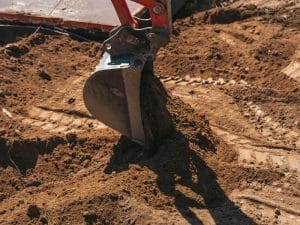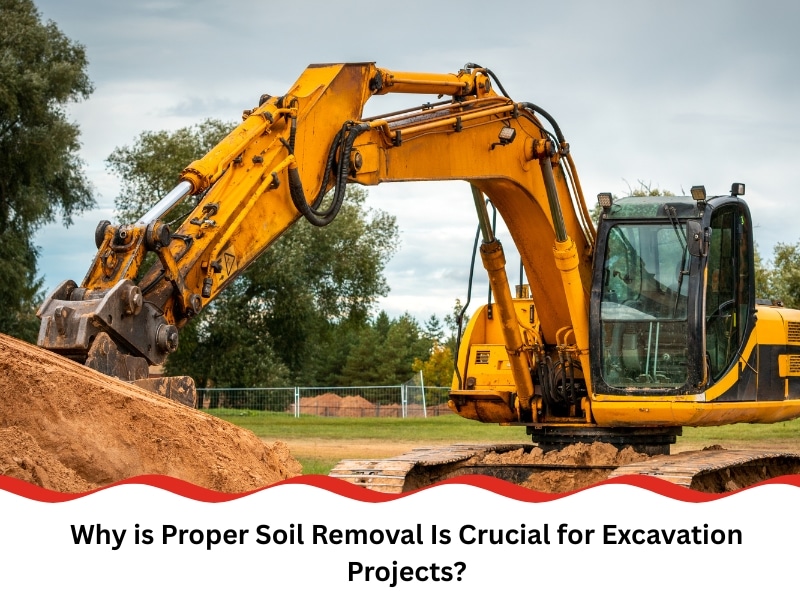Soil removal may not sound glamorous, but it’s a critical step that can make or break your excavation project. Whether you’re digging for foundations, utilities, or landscaping, the way you handle soil determines everything from site safety to job timelines. And when it’s overlooked or rushed, the consequences don’t just pile up — they compound. In construction-heavy areas like Newcastle, site space is limited, regulations are stringent, and conditions change rapidly. That’s why understanding the importance of excavation soil removal — and managing it effectively — is non-negotiable. From protecting workers to avoiding hefty fines, proper soil removal saves more than time and money; it keeps projects compliant, safe, and on track. This article will explore why skipping this step is a mistake and what you need to do instead.
What are the dangers of skipping excavation soil removal?
Leaving excess soil on-site isn’t a shortcut — it’s a hazard. Without timely removal, loose soil can compromise stability and create unsafe work conditions.
- Soil piles can obstruct machinery, walkways, and emergency access
- Build-up near trench edges increases the chance of wall collapse
- Heavy, wet soil left idle can stress temporary supports
- Unremoved fill can cause trip hazards and limit visibility
More than just inconvenient, these risks can become costly. Loose soil can slide unexpectedly or become waterlogged, triggering collapse. This isn’t just a theoretical risk — it’s one of the top causes of excavation injuries. For real-world prevention, these strategies for preventing soil collapse during excavation provide practical tips for managing spoil on active worksites.
Skipping this step is a gamble no experienced contractor takes lightly.
How does excess soil impact construction timelines?
Extra soil doesn’t just sit around. It blocks access, delays inspections, and forces rework if utilities or structures are misaligned due to poor clearance.
- Delayed backfilling and compacting due to soil congestion
- Heavy rain is turning stockpiles into slushy, unworkable messes
- Missed excavation depth due to uneven spoil accounting
- Longer haulage schedules when removal isn’t planned early
Each delay means crews and machines are idle, but the meter’s still running. Even a day or two of wasted time can blow out timelines, particularly on tight-turnaround sites. And once councils or utility providers get involved, stalled permits and re-inspections can freeze progress.
Poor planning around spoil removal can snowball into project-wide delays.
Why does soil removal vary based on project type?
Not all soil is created equal, and neither are all projects. Factors like contamination, terrain, and excavation depth influence how and when soil must be moved.
- Residential jobs may reuse clean fill, while commercial sites often require off-site disposal
- Industrial digs usually involve contaminated or classified material
- Deep excavations demand staged removal for wall support
- Rural projects might allow for on-site relocation, unlike city sites
Here’s a snapshot comparing removal types across projects:
Project Type | Typical Soil Handling | Common Challenges |
Residential | On-site reuse or clean fill | Space constraints, weather delays |
Commercial | Offsite disposal | Transport logistics, compliance |
Industrial | Licensed waste handling | Contamination, heavy haulage |
Infrastructure | Engineered backfill | Volume, depth, underground assets |
Understanding these differences highlights the importance of excavation in industrial site preparation, where removal isn’t just logistical — it’s legal.
Assuming all soil can be handled the same way sets you up for failure.
What methods improve efficiency in soil excavation and removal?
Getting soil out efficiently doesn’t just save time — it reduces risk. Selecting the right tools and tactics tailored to site conditions can significantly enhance your workflow.
- Use vacuum excavation for sites with tight access or sensitive assets
- Deploy tracked loaders on uneven or soft terrain to avoid sinking
- Schedule trucks to rotate, not queue, to maintain movement
- Use spoil bins or geo-fabric liners to separate reusable fill from waste
Timing matters too. Hauling early in the day when roads are clearer, or before forecasted rain, helps avoid messy setbacks. Most importantly, plan spoil routes before digging begins. This is key to discovering reliable solutions for safe soil excavation removal, ensuring that safety, timing, and environmental goals align.
The proper method turns a dirty job into a streamlined operation.
How can you manage disposal responsibly and in compliance with the law?
Soil doesn’t vanish once it’s off-site — and neither does your liability. Failing to dispose of it properly can land you with fines, license losses, or worse.
- Track waste classification before transport — is it VENM, ENM, or contaminated?
- Use licensed facilities for any non-virgin or treated material
- Maintain disposal dockets and site chain-of-custody records
- Avoid dumping soil in unapproved locations or fill sites
The regulations aren’t arbitrary — they protect the water table, neighbouring properties, and ecosystems. Ignoring them isn’t just illegal, it’s reckless. Cutting corners here can cost more than any short-term savings would yield.

Should you test the soil before removing it from a site?
Yes — and not just to tick a box. Soil testing prevents legal issues, protects workers, and informs better decisions about reuse or disposal.
- Testing reveals contaminants like heavy metals, asbestos, or hydrocarbons
- Results determine whether the fill can be reused or must be removed
- Soil compaction and moisture tests influence how fill is managed
- Knowing classification avoids mixing waste streams, reducing tipping fees
Skipping testing is a rookie mistake. It can turn what seemed like clean fill into hazardous waste, triggering delays and disposal headaches.
Without testing, you’re excavating blind — and exposing yourself to avoidable risk.
How can you manage disposal responsibly and in compliance with the law?
Soil doesn’t vanish once it’s off-site — and neither does your liability. Failing to dispose of it properly can land you with fines, license losses, or worse.
- Track waste classification before transport — is it VENM, ENM, or contaminated?
- Use licensed facilities for any non-virgin or treated material
- Maintain disposal dockets and site chain-of-custody records
- Avoid dumping soil in unapproved locations or fill sites
These requirements aren’t just bureaucratic red tape — they help protect the land, water systems, and nearby communities. Understanding how contractors are held accountable means being aware of the rules governing the management of risks associated with excavation work, particularly when dealing with large volumes or potentially hazardous materials.
Final Thoughts
Soil removal might look like grunt work, but it’s one of the smartest investments you can make in an excavation job. Done right, it keeps sites safe, timelines tight, and regulators off your back. Whether you’re digging deep in an industrial zone or clearing a home site, getting your spoil sorted sets you up for a win.
For more clarity on proper soil handling, disposal, and compliance, connect with the team at Watson Demolition & Site Services to discuss your needs.

